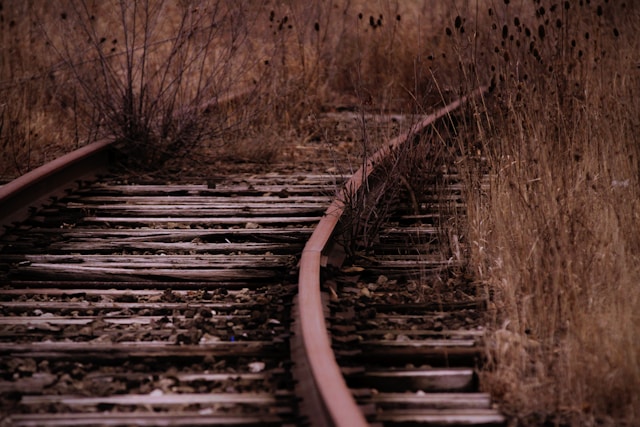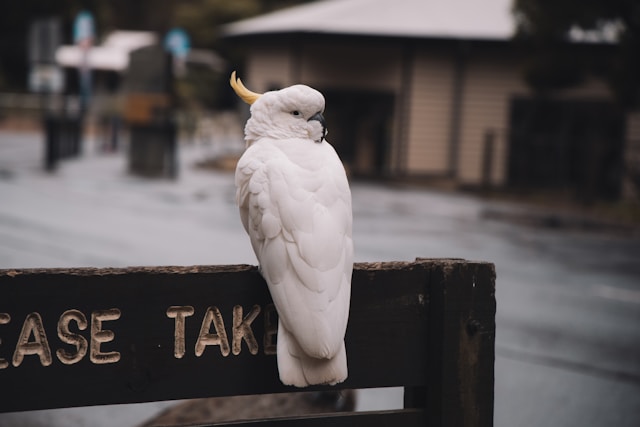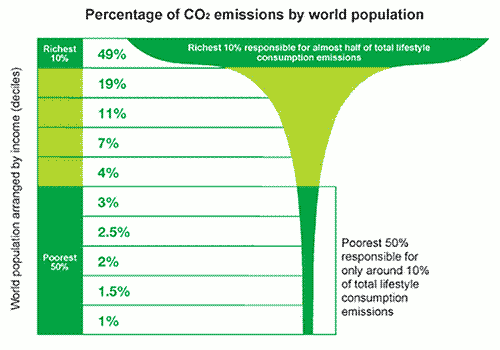
by DGR News Service | Aug 21, 2024 | ACTION
Hello! Brandi from Deep Green Resistance here.
We here at DGR would love to invite you to our upcoming online conference opportunities. They’re all about our annual conference which is fast approaching. The dates of the conference are Friday, August 23rd (afternoon) until Monday, August 26th (morning).
We’ll be doing three livestreams. They are all taking place on Saturday, August 24th and all times listed are in the Pacific Daylight Time zone. Our first live stream starts at 9 am on the 24th and will be presented by Lierre Keith. Those of you who have seen Lierre in action know what a powerful speaker she is. Her talk is entitled From Living Planet to Necrosphere: In the Time of Patriarchy’s Endgame and you definitely don’t want to miss it!
Our second livestream will be taking place at 2:30 pm and it will be a Q & A hosted by award-winning author Derrick Jensen. Here is the event page link for both of these first two livestreams and this is also where you can submit questions for Derrick to take on during his event. https://www.facebook.com/events/1201872644161114
The third livestream, our Grand Finale, is also a much-needed Fundraiser and begins promptly at 6 pm. We could really use your help, now more than ever, and we’ll be deeply appreciative of every single dime our fundraiser brings in. Here’s the event description for you: It’s Open Mic night at the annual DGR conference. Join us live for magic, music, poetry, and prose, and lots and lots of jokes. We’re running this as a fundraiser and appreciate anything you can give.
And here is the event page link to the Open Mic fundraiser for you as well: https://www.facebook.com/events/3910359789251916/
An additional item for your attention is that we will be offering all of our Conference Workshops over Zoom, a video meeting platform. Some of you have already asked to be on the Zoom list so next I’ll be gathering the names and getting everything ready for this, including publishing the schedule. There will be a limited number of spots for Zoom participants; if you haven’t already asked to be on the list but want to be, now is the time to request this. You’ll need links to be able to Join and we’ll need to have you ‘all set’ in plenty of time. To request your spot on the Zoom list, please send me an email at brandiwork24@gmail.com letting me know. I will respond to let you know either that your spot is confirmed or that we are full.
As Always, Stay Fierce and Stay Wild.
Thank You Very Much!
—
Sincerely,
Brandi Hayworth
Deep Green Resistance
Executive Director

by DGR News Service | Jul 12, 2024 | ACTION, Culture of Resistance
Editor’s note: When we engage in any form of activism, building leadership capacity helps people become more confident and proactive. It means the leader of the group doesn’t have to be responsible for every task and can delegate other important tasks to members. In this case, the author talks about climate change, we at DGR think that climate change is one of many problems and stems from our destructive industrial culture. But you can exchange the word for any other that would describe a dire situation today – the strategy of leadership capacity still applies. DGR disagrees with 350.org’s belief that electrifying everything will “solve” climate change. It is, in fact, impossible, and attempts to do so will only make matters worse.
By 350.org, Daniel Hunter
Learn how organisers recruit and build the leadership capacity of others with the Ladder of Engagement.
This article has been sourced from Daniel Hunter’s book published by 350.org called The Climate Resistance Handbook. Daniel explains the Ladder of Engagement with a story from South Africa about an environmental justice group. Read below or see Chapter 3 on Growth and pages 40 – 46. The images have been added by the Commons Library.
The Ladder of Leadership
Growing groups face a challenge. Organisers are often the ones doing much of the work of the group — and they get tired of doing everything…One option for the organisers getting tired is they keep sacrificing more and more. They give up sleep. They sacrifice school and work. They stop social activities — it always becomes about the activism.
For most people, that’s just not sustainable. So what’s the alternative?
Getting new people to step into leadership!
A story from Ferrial Adam in South Africa provides us an example. She was part of an environmental justice organisation working with folks at the grassroots. Led largely by women, they were challenging a government policy called “Free Basic Electricity.” That policy guarantees the government will pay for a certain amount of electricity to poorer households (currently 50 kWh, about 5% of what the average US home uses).
This is a major issue, as the lack of access to energy often dooms whole districts to poverty. For example, those lacking electricity often rely on carbon-intensive paraffin, candles, or cutting down trees. This leads to a host of negative environmental and health effects.
Building relationships is key
This policy was widely credited as a successful social justice policy. But those who were most impacted by this policy weren’t part of the debate. So Ferrial began a research study to learn more about the actual impacts this had for households, which meant going to the poor districts in the city of Johannesburg.
She started where the people were. Her first step was finding a group of women who were keen and already working on energy struggles. It was important to start by explaining the intention and need for the work. She started by getting people to monitor their use of electricity. She spent time building relationships with mostly women, who ran the households. It took many months of weekly workshops to teach people to calculate the energy consumption of different household items.
Increased confidence
Her report was done. And she could have been the person presenting the report in front of national bodies. But when public hearings were planned to increase costs, the people Ferrial had been working with wanted more. She asked the women if they would testify on their own behalf. They jumped at the chance. Ferrial says, “It was so amazing and powerful watching people go to a hearing and speak as a collective on why the government should not raise the price of electricity.”
“They became part of the organisation and took their own leadership. Ferrial wasn’t calculating people’s consumption for them and writing the report and talking before the national bodies. She was organising. She wasn’t doing things that people could do for themselves.”
The women were supported through steps of engagement over the months. This way, they gained expertise about their own electricity usage and education on national policy and the impacts of climate change. Each step gave them increased confidence to not only testify but be strong community activists.
This concept is called the “ladder of engagement.”
The women wouldn’t have been ready to testify as their first step. Instead, they needed to learn more about their own situation. Then they needed to connect to others’ stories and see they weren’t alone. The ladder helps us think about what to do when people say, “What you’re doing is great, how can I help?”
“In our minds, we have our to-do list and things we need done. But that’s not where to start. We have to think from the perspective of that person.”
That probably means our first response is, “Let’s talk about what you’re up for doing.” And we find out what kinds of tasks they might be willing to help us with — ones that match their interest and involvement (not our long to-do list).
“This isn’t a science, and each person is different. Some people have absolute terror making phone calls but would happily risk civil disobedience. So chatting with people about their interests is important.”
Thinking about newer activists in our group with the ladder of engagement in mind helps us think about the next step for them.
And as Ferrial did, we can offer steps to keep increasing their level of commitment and involvement. This cultivates relationships and helps people move up the ladder of engagement, which is how you, too, will increase your group’s involvement.
Recruit People Outside your Circle
“Of course, to get more people into leadership, you have to have lots of conversations with them — about the goals of the campaign and the work you’re doing. You have to build trust. And you have to find them!”
Sometimes it’s hard to recruit new people, because we get used to talking the same way about an issue. You may have some ways you talk about climate change that you’re used to.
But someone you want to recruit may not talk about it that way. They may not care about climate change, but they may care about cats. You can tell them that climate change is increasing the habitat for fleas, ticks and mosquitoes. That’s bad news for pets. It exposes them to new diseases, like West Nile, Lyme disease and heartworm. Or maybe they care about football. Climate change isn’t going to end football soon, but it will change the game. With more erratic climactic events, you will see more games like the snowy 2013 World Cup qualifying match between USA and Costa Rica. It was a disaster. Or, since the spread of Zika (and other diseases) increase with the rise of temperatures, Brazil’s warmer temperatures threatened to derail the Rio 2016 Olympics.
How to organize?
Or maybe they just don’t like being angry! A study on climate and conflict showed that warmer temperatures increase people’s personal conflicts (by 2% amongst friends, and by 11% outside their social circle). So hot temperatures can cause more anger.
But even when we get more flexible in talking about climate change, many groups often mistakenly believe they’ve tapped all the people who are passionate about their issue. “Nobody in my school cares about climate change.” The problem is often not that we have exhausted the possibilities in our city or small town — it’s how we are organising.
Building leadership capacity
When it comes to recruitment, many of us think of people just as individuals. We imagine there is a scattering of people out there from whom to recruit.
The reality is different. Most people are not attracted to groups simply as individuals. Ask around, and you’ll find that very few people get involved in a cause because they receive a flyer, get sent an e-mail, see a poster, or see a Facebook post.
Most people join a group or get involved because someone they know personally invited them.
That’s because society is better understood as clusters of “social circles”. Social circles may be organised as formal or informal groups — religious communities, gangs, tight-knit neighborhoods, etc. Social media can show you the number of people who are friends of friends many times over.
The quickest way to build a group is to ask people in your net works of friends or family. Those people are the most likely to say yes to you. But a group stops growing when it reaches its maximum potential of people from its members’ initial social circle. Continuing to reach out within that circle may not bring in many more people.
The trick is to jump out of your social circle and find people connected with other social circles.
Ways to recruit in social circles
Show up at the events and meetings of people outside your circle. This is a great chance to meet others, see how they work, and find out where their values overlap with your campaign.
- Stop doing the tactics you’ve always been doing, and try new ones that might appeal to different audiences. If your tactics are marches, strikes, and massive, disruptive direct actions, and it’s not working, then it’s time to adapt. Ritualising our actions makes us predictable and boring. People want to join fresh and interesting groups.
- Notice when other groups make overtures toward your movement, and follow up with them. For example, if we are seeing reluctant corporate and government allies taking steps towards us, maybe with some of them there are relationships we can build to keep them moving faster.
- Do lots of one-on-one meet-ups with leaders from other movements and groups. Meet with different people — not to recruit them, but to learn from them.
- What are their values?
- What interests them?
- What strategies recruit people like them?
- Do direct service. Gandhi was a big fan of what he called the “constructive program,” which means not only campaigning against what we don’t want, but also building the alternative that we do want. Climate disasters provide large-scale and small-scale chances for us to be part of that. Direct service to disaster survivors and other community-based projects put us shoulder to shoulder with others who want to make things better. Who better to hear a pitch about joining your campaign?
Growing outside of your social circle takes time, but when it comes to building successful groups, it’s worth the effort.
This article is from the Climate Resistance Handbook which brings together a wealth of learnings from the climate justice movement. It starts with breaking social myths about how social movements win. Then dives into campaign tools and frameworks you can use. It closes with how to grow your group and use creative, impactful actions and tactics. This book is full of stories of climate warriors from around the globe and historical movements. It’s filled with practical wisdom and inspiration to make you more effective, more active, and ready for what’s next.
Derivative of graphic by parasoley/Getty Images Signature via Canva.com

by DGR News Service | Jun 24, 2024 | NEWS, The Problem: Civilization
by Riza Salman on Mongabay 11 June 2024
- During the COVID-19 pandemic, a young documentary filmmaker began quietly joining a growing number of Facebook community groups run by traders of rare Indonesian birds.
- Over the following two years, a reporting team from several news organizations uncovered a wide network of actors offering species for sale for as little as 250,000 rupiah ($15). These individuals included a serving naval officer.
- One shop owner selling birds in Morowali, the epicenter of Indonesia’s nickel mining and smelting boom, said they began trading in birds in 2018, after ships began docking in the local port bringing oil and cement.
KENDARI, Indonesia — In 2021, as the world grappled with the COVID-19 pandemic, Irwan watched online as a flurry of new social media groups dedicated to parrots sprang up across Indonesia.
When Irwan, whose name Mongabay has changed to protect his identity, first began participating in these online marketplaces, he saw a rainbow of parrot species offered for as little as $15 a bird, but with little further information about the species.
Two years later, after careful research, Irwan helped uncover a diffuse network of operators quietly transporting rare birds from eastern Indonesia for sale. He set out to establish whether the birds were bred in captivity or plucked from protected forests around the industrial boomtown of Kendari, his home in Southeast Sulawesi province.
“This was never detailed,” Irwan told Mongabay Indonesia. “That’s what interested me about it.”
Illegal trade in wildlife around the world is worth up to $23 billion each year, with one out of four global bird and mammal species falling victim to the business, according to BirdLife International.
As in other criminal enterprises, researchers emphasize that the true extent of the illegal trade dwarfs the number of seizures by authorities.
Much of the trade is conducted on social media. In 2016, Facebook partnered with WWF and other environmental groups to form the Coalition to End Wildlife Trafficking Online, aiming to reduce wildlife trade on the platform by 80% within four years.
In 2019, Facebook banned all live animal trade on its platform, allowing only verified sellers with legitimate business reasons. By 2020, the partnership introduced an alert system that notified users about the illegality of trading wildlife products whenever relevant search terms were used.
Flight plan
Mongabay Indonesia worked with other news outlets including Garda Animalia, which reports exclusively on the wildlife trade in Indonesia, to track and document the illegal bird trade in Sulawesi, an important transit hub for wildlife in the archipelago.
Reporters saw protected species advertised openly on social media, including the yellow-crested cockatoo (Cacatua sulphurea), black-capped lory (Lorius lory) and Moluccan eclectus (Eclectus roratus).
One account was traced to an individual whom reporters dubbed by their initials, WL: a university student in Puwatu, a subdistrict of Kendari. Reporters found WL in a two-story house fenced in by concrete and iron walls, with a plastic sheet obscuring the view of a terrace. Parrots native to the island of New Guinea perched in an enclosure outside.
WL said he’d obtained the parrots from a contact known by the Facebook pseudonym “M Parrot.” He claimed the man held a breeding permit from the provincial conservation agency in Southeast Sulawesi, the BKSDA.
WL and M Parrot were members of the same Facebook groups, where they interacted. WL said he understood that M Parrot kept around 20 pairs of birds, and that they could be identified by rings on the birds’ talons used to show certification.
“If it turns out that it’s against the law … well, don’t blame me,” WL told our reporting team. “I’m just a buyer.”
The student said the trade in birds from New Guinea likely came from hunters based in the island, whose western half is part of Indonesia.
Meanwhile, parrots in Kendari are often sourced from Obi Island in North Maluku province, and sent to port in Morowali by weekly ship. From there, the cages are switched to an overland transfer to Kendari.
Boomtown birds
Bungku harbor serves the industrial heartland of Morowali, which is undergoing rapid development as part of Indonesia’s nickel mining boom. The port was undergoing renovations and there wasn’t a ship to be seen when reporters visited this year.
A port worker said he usually saw crates of birds endemic to Maluku and Papua unloaded every week as large ships docked in Morowali. From here, the bird trade fans out into this part of Sulawesi, the world’s 11th largest island.
We met a man on the roadside of the main highway north of Morowali selling various types of parrots, without any official documents.
“This is 650,000 rupiah [$40],” he said, offering us a cage. “It’s a Maluku parrot.”
The man said he obtained the birds from crew members of ships anchored in Morowali, and that he would occasionally purchase birds from a trader in South Bungku, a subdistrict of Morowali.
The main road was packed with thousands of motorcycles of workers from the vast Morowali nickel smelting complex, a key node in the global electric vehicle industry. Inside one small shop by the road we found two black-capped lories, the birds’ feet chained to a small perch. Three yellow-streaked lories (Chalcopsitta scintillata) idled in their cages above a thin base of sand.
The black-capped lories were each priced at 1.8 million rupiah ($110), while the asking price for a yellow-streaked lory was 800,000 rupiah ($50). A contact number was displayed in front of the shop.
The owner said he’d been trading in birds since 2018, after ships bringing oil and cement started docking more frequently in Morowali to feed the mining boom in the region.
Later, when asked to identify the source of the birds via a WhatsApp message, the shop owner didn’t respond.
Bird on a wire
In October 2023, our reporting team visited the Southeast Sulawesi office of Indonesia’s conservation agency, the BKSDA, to obtain information on breeding permits for birds in the province.
The agency held only one such permit on file. It had been authorized in March 2023 in the name of Asriaddin.
Erni Timang, forest ecosystem lead for the Southeast Sulawesi BKSDA, said that documentation held by the conservation agency showed the permit holder didn’t have a license to deal in the birds.
“He can only breed, he can’t trade yet,” Erni told Mongabay. “You need to have a distribution permit first.”
Ahmar, the BKSDA’s conservation lead for Kendari, said his office had on several occasions attempted to clarify the trading status of the permit holder. However, Ahmar said that on every occasion, Asriaddin was unavailable at his registered address because he was on duty at the Kendari naval base. A public relations officer at the base confirmed that Asriaddin was a serving naval officer.
Mongabay visited the registered address in late March. At the home we saw cages containing various colorful parrot species, exotic imports as well as eastern Indonesian endemics, including black-capped lories, yellow-crested cockatoos, and a black lory (Chalcopsitta atra).
“In the past there were many, but now there are fewer,” a resident at the address told reporters.
On May 25, reporters reached Asriaddin by phone and asked about his status as a trader of birds.
“That’s not correct, it’s just speculation,” Asriaddin said.
When asked whether he had failed to report any breeding activities to the government conservation agency, Asriaddin claimed to not properly understand the reporting requirements.
Singky Soewadji from the Indonesian Wildlife Lovers Alliance (Apecsi), a civil society organization, criticized the awarding of breeding permits by the BKSDA conservation agency, which is part of the Ministry of Environment and Forestry.
“The director-general of the BKSDA should carry out its control function,” Singky said, “not wait until there is a violation of the law.”
Photo by David Clode on Unsplash

by DGR News Service | Apr 29, 2024 | ANALYSIS, The Problem: Civilization
“The climate crisis for example, has been framed as an environment issue and a technology issue, when it is actually a crisis of the human consciousness and psyche. This criminally negligent misdiagnosis, reframing and distortion of major existential crises into simple practical problems to be solved by technology, demonstrates how superficial and corrupted our very approach to problem-solving is. We are trying to solve the disasters of capitalism with more capitalism. This has never worked, and it never will. The very desire to profit out of these solutions, to “create jobs” and prosperity through Green New Deals, only demonstrates the level of delusion and persistent lack of any seriousness in dealing with a problem which is of apocalyptic proportions…..There are thousands of “environmental” organisations who are nothing but shopfronts for extractive capitalism in the form of renewable technology. Their very organisation and operating principles emulate capitalist ventures.” – George Tsakraklides
By Mankh
“Now they worry and they hurry and they fuss and they fret
They waste your nights and days
Them, I will forget
You, I’ll remember always”
– Bob Dylan, from “Workingman’s Blues #2”
”Crazy Horse
We Hear what you say
One Earth, one Mother
One does not sell the Earth
The people walk upon
We are the land
How do we sell our Mother?
How do we sell the stars?
How do we sell the air?”
– John Trudell “Crazy Horse”
Adults, teens and some kids got duped. The slick, climate confidence tricksters distracted people by fixating on CO2 air quality and temperatures at the expense of the very land you’re standing with.
“The sky is falling! The sky is falling!” they shouted, hurling numbers, measurements, and projections at the dart board of your mind so they could usher in a trendy era greenwash cash cow – buy now and save the planet! Their rewrite of Henny Penny more like the fox guarding the hen-house for an ugly penny i.e. billions. Fixating on the sky while habitats being mined and destroyed beneath the very land you’re standing with, but are you, too, yearning for a piece of that pie in the sky?
There’s an African saying, “No one shows a child the sky.” I interpret that as: Children naturally look to the sky, there is an innate knowing and rapport, they don’t need to be told. Yet if overly instructed, children can miss out on the wonder of finding out and experiencing for themselves. If manipulated, children and adults can be misled.
My proof of how all that seeps into the mainstream everyday society is via web-searching for a few days to find a corded weed trimmer because I don’t enjoy the gas fumes or noise from the old one; virtually every trimmer and other such gadgets, including vacuums, now use lithium batteries.
“As of February 29, 2024 an estimated 21,897 active, filed, and submitted placer claims, have been located in Nevada, presumably for lithium or lithium brine in 18 different hydrographic basins,” not to mention the rest of the world, and already destruction of sacred Native lands at Thacker Pass/Peehee Mu’huh in so-called Nevada. A case of destroy the land out west so the suburban east and elsewhere can feel good about greenwashed tools that are helping to protect the environment by destroying it! By the way, the cost of trimmer and electric cord was much less expensive than the others.
The sky story (not to diminish actual air quality issues and other data) is a textbook distraction or dis-tract attention, the word meaning “dis-” “away from” and “tract” “tracts of land and water.” Yet “distract” is step three of a simplified three-stage “tract” pattern of colonialism and disaster capitalism.
First comes “abstract” from “ab-” “to draw away from” & “tracts of land and water.” Abstract so as to get your attention in your head and disregard the feet and heart and soul of things. A prime example comes from Dr. Tink Tinker (Osage – Wazhazhe); the conversion of land into “property” which “chopped up our Grandmother [Earth] into pieces.”
Fast-forward to bizness lingo:
“A tract of land is a well-defined piece of property with specific boundaries.
- It plays a key role in real estate transactions, zoning regulations, and property disputes.
- It can range from small residential lots to extensive commercial developments.
- Knowing what constitutes a tract of land is essential for demarcating property lines.”
Yet not even a homeowner’s God’s little acre backyard is sacred. In the 1950s chemical companies turned the medicinal Dandelion Nation into an abstract noun, “weed,” then got brainwashed yard-gardeners to poison (a form of extraction) the dandelions; thus distracting people from the medicinal values available from the very land they were standing with.
Number 2 is “extract” — from “ex-” “draw out of” & ”tracts of land and water.” Abstracting consciousness – which is a cutting off of empathy and recognition of the very substances that nurture us — enables the extractive industry mechanism to proceed without a care. Most of the extraction has to do with mining minerals and pumping oils, yet chopping down trees for solar panel ‘fields’ or another Amazon “fulfillment center” warehouse is another form of extraction, especially if you’re a tree whose deep roots are ‘drawn out of the Earth.’
Number 3 is “distract” — so as to keep your consciousness away from Land and Water, so as to enable the extractive industry to continue as if it’s normal business as usual. Distractions run the gamut from the more immediate and in your face corporate media, tabloid news and mainstream so-called culture to longstanding institutionalized religions that dis-empower people by keeping them at a distance from their direct and personal relating with Mother Earth and Spirit. Plus there’s the educational system as Information Factory, or as Birgil Kills Straight (Oglala Lakota) summed up the systemic process, “They cut you off from your heart, stick you in your head, and manipulate you out of a book.” Yet: “No one shows a child the sky.”
Though not specifically included in the “tract” etymology, Air can be considered an extension of Land and Water since what is done to them often affects the Air.
All of Land and Water as Property
The two more recent, mostly hidden, insanities are:
1): deep-sea mining
“Deep sea mining is the extraction of minerals from the ocean floor at depths of 200 metres (660 ft) to 6,500 metres (21,300 ft). Deep-sea mining uses hydraulic pumps or bucket systems that carry deposits to the surface for processing.”
What could go wrong?
My investigative call to the Octopus has not been returned. I pray they are ok.
2): The NYSE valuing of all of Nature aka Mother Earth as an “asset class.” I read about that in 2021 but don’t recall hearing of anything else until an interview with Rebecca Adamson (Cherokee) on First Voices Radio (FVR), well-worth the listen.
From a 9/14/2021 article: “NYSE and Intrinsic Exchange Group Partner to Launch a New Asset Class to Power a Sustainable Future”:
“This new asset class on the NYSE will create a virtuous cycle of investment in nature that will help finance sustainable development for communities, companies and countries,” said Douglas Eger, CEO of IEG. “Together, IEG and the NYSE will enable investors to access nature’s store of wealth and transform our industrial economy into one that is more equitable.”
You have to have money to invest, so the “virtuous cycle of investment in nature” con game is rigged from the get-go. And, “more equitable” is an oxymoron because “equitable” is “just and fair, equal,” therefore ‘equal is equal’ and “more equal” is bullshit. Then again, the masters of fine print manipulation may be referring to another dictionary definition of “equitable” along the lines of the title of Peter d’Errico’s book Federal Anti-Indian Law: The Legal Entrapment of Indigenous Peoples – “of or relating to rights historically enforced in courts of equity.”
In an article by Whitney Webb and Mark Goodwin from 2/8/2024, “Tokenized, Inc: BlackRock’s Plan To Own The Fractionalized World,” there’s an excellently concise analogy summary of the current potential global disaster: “Nature, the New Gold.”
History 101 shows a progression:
– gold rush, gold
– black gold, oil
– white gold, lithium
But now the powers that do too much are going for the whole kit and caboodle: Nature/Mother Earth as gold. This should bring shudders to anyone with an ounce of empathy. Or else, another line from Trudell’s “Crazy Horse”: ”Mirrors gold, the people lose their minds.”
As highlighted by Rebecca Adamson in the FVR interview, also in on the deal is Bloom23, a slickly-worded website proclaiming “protecting nature” and working with “BIPOC” [Black, Indigenous, (and) People of Color], yet it’s all under the banner of business, or more accurately, as the website name attests to, GreenBiz.
Here’s a blurb from Theresa Lieb, Sr. Director, Nature and Food Systems:
“Biodiversity has quickly become a hot topic for companies and investors. At Bloom 23, the flourishing group of nature-focused business leaders will come together with policymakers, entrepreneurs, Indigenous groups and other key stakeholders to transform rising awareness into real progress.”
Sounds pretty good, right? But a FAQ spill$ the bean$:
”Who attends Bloom 23?
The majority of attendees will come from Fortune 500 companies, investment and insurance firms, service providers, leading nonprofits and government agencies. Experts from community organizations, academia and nature tech startups will also participate.”
Indigenous Peoples have been doing “nature tech” for thousands and thousands of years. For one in-depth example, read the book Native Science: Natural Laws of Interdependence by Gregory Cajete.
According to Rebecca Adamson’s article “Water + Indigenous Peoples Rights = Risk”, 3/8/2024:
“80% of the planet’s remaining biodiversity is within Indigenous territories along with 40% of the terrestrial areas, 33% of the intact forest landscapes and 70% of tropical forests.”
So there’s the not new battle line, as most at risk from such investments are Native/Indigenous Peoples on the front lines — and “nature focused” woke inclusivity won’t stop the destruction.
The least one can do is to de-abstract the thinking process so as to access the true nourishing energies; be wary of any and all extractive processes; and minimize being distracted from caring about Land and Water — and maximize actually caring for Land and Water by doing whatever you can to thwart those who see dollar signs instead of true gold: Sunlight amplifying Daffodil, Forsythia, Dandelions, Marigolds, Freesia, Black-Eyed Susan, Goldenrod . . . . .

Photo by Natalia Luchanko on Unsplash
Banner Photo by Michael & Diane Weidner on Unsplash







